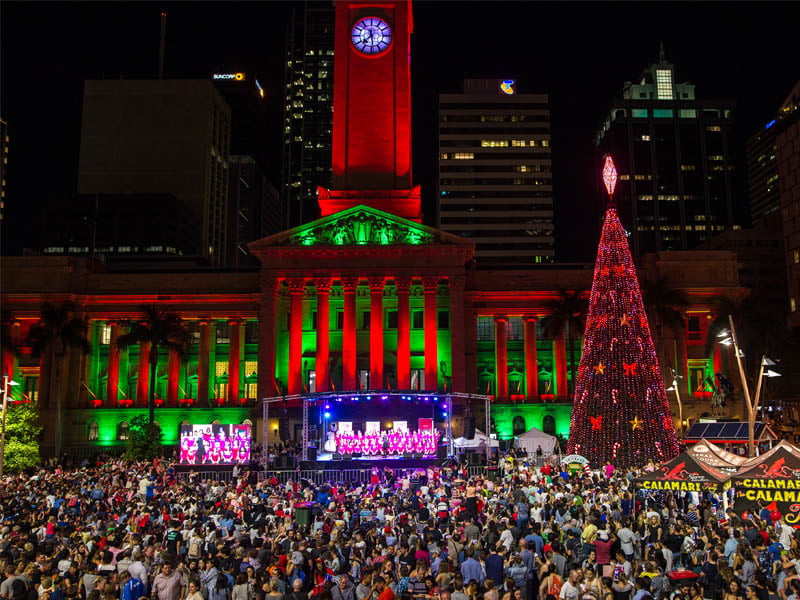At first glance, Christmas trees aren’t particularly innovative. They’ve been around for centuries, and their lighting has transitioned from candles to incandescent, and now LEDs. But that’s about it.
Yet Brisbane’s iconic King George Square Christmas tree is an example of how the City is creating an innovative, smart cities platform.
As part of the Brisbane Innovate program, the City issued its 2017 Christmas Tree Lighting Challenge. Participants in Brisbane Innovate were asked how they would power the tree using sustainable, innovative technology.

In the past, the tree’s lights were powered using solar cells, with the star topping the tree a symbol of Brisbane as an innovative, sustainable and smart city. However, the solar cells powering the lights were coming to the end of their life, and a new power solution was needed.
After a competitive tender, Queensland-based company LitePix was awarded the contract to provide the technology to power the star and its associated lights. Its solution includes 8000 programmed LED lights powered using solar panels on the new Santa Hut, allowing programmed lighting displays for all to enjoy following the official lighting of the tree on November 25.
The tree is just one, very public, example of Brisbane Innovate. The program is co-ordinated by Digital Brisbane in conjunction with Brisbane Council, and consists of a series of challenges and events which encourage community and industry collaboration.
This collaboration is intended to develop innovative solutions to help build and sustain the growth and development of Brisbane as a world-class smart city.
According to Joachim Van Den Bergh, a Belgian academic and smart cities expert, who was recently hosted as an academic in residence by Brisbane Innovate, the program is a prime example of how smart cities can tap the almost infinite brain-power of different stakeholders.
“A program like Brisbane Innovate needs to go beyond listening and asking for input,” he said.
“As far as I can tell, the Brisbane Innovate approach also asks and encourages participants to actually execute the ideas and projects, if need be supported by Council budget and expertise, and that is a great thing.
“Ultimately, for me, it shows the Council’s belief that the City itself has all the capabilities required to continuously improve itself, and to deliver those societal improvements almost A to Z,” he continued. “I felt that belief during my visit earlier this year, and I also find that belief reflected in the Digital Brisbane 2.0 strategy.”
Brisbane Innovate commenced in mid-2015, and since then Brisbane Council has received 169 innovative proposals, has implemented four, and has 13 at the proof-of-concept and trial stage.
For more information on some of the current Brisbane Innovate projects, please click here.
Do you know more? Contact James Riley via Email.

